Her hot breath spilled over my upturned, cupped palm as the strong muscles at the tip of her trunk pressed into my hand, keeping us linked while we walked along the path. As I turned back and lifted my eyes, she was looking patiently down at me, from under her long eyelashes. I have to admit, I found this a scary moment, having heard many stories of elephants trampling people.
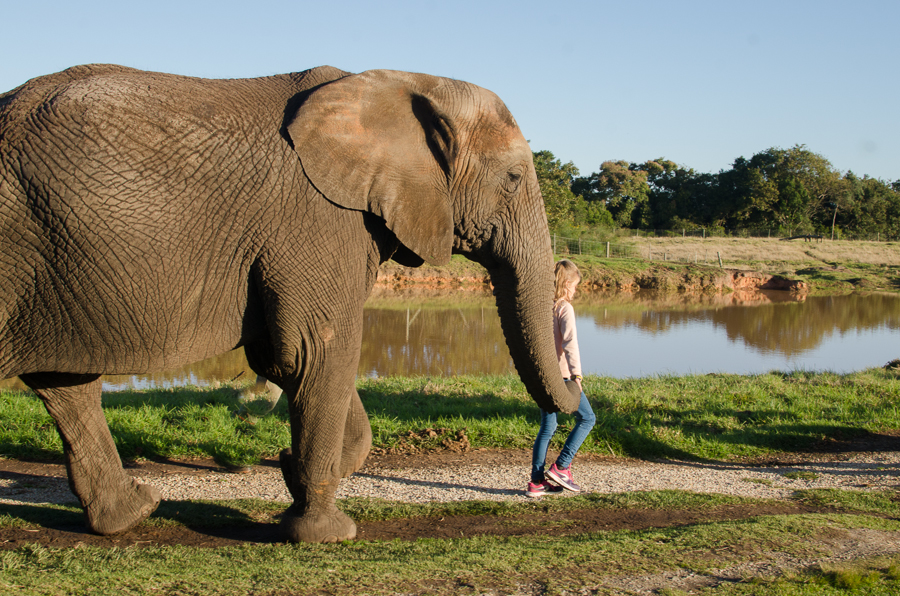
Let me say that I agree with what most of you are probably already thinking. It's cruel to keep elephants in captivity, and dangerous to have them walk with children. So I want to explain the story of these five young, African elephants and why we chose to visit them at the Elephant Sanctuary in Plettenberg Bay, The Crags, South Africa.
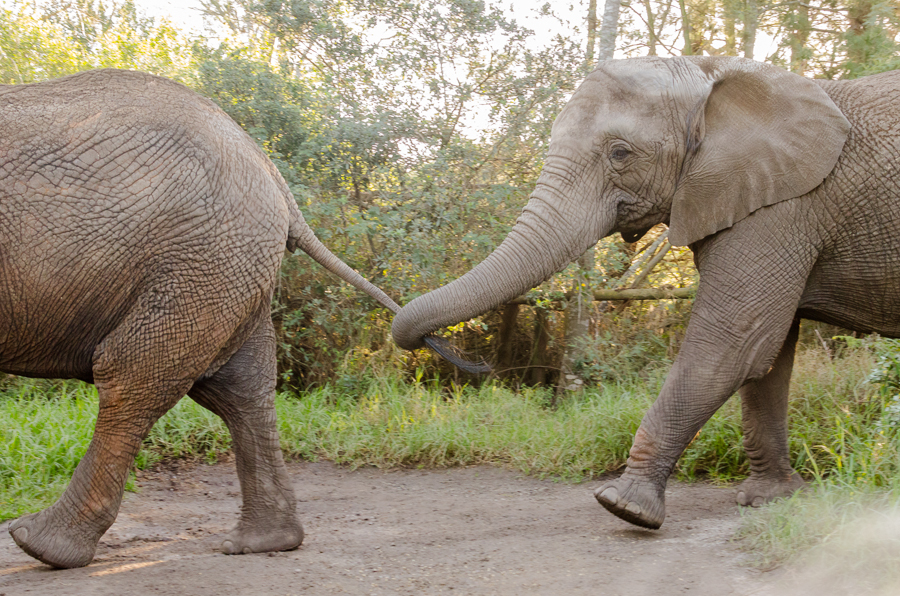
Poachers orphaned the elephants when they killed their families for the animals' large tusks. These elephants would have either caused problems in the wild, as without a herd to belong to, or would have themselves been killed by poachers for their own tusks. From what I understand, these elephants are positively trained. This means that they are given rewards (food) when they do something right, not punished when they do something wrong.
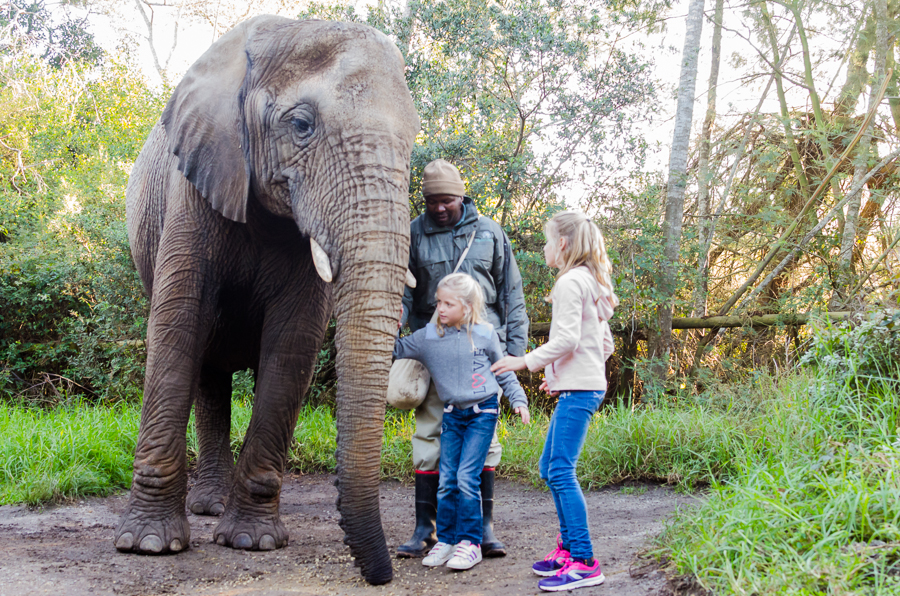
During my research, I came across a comment from a previous sanctuary visitor who said, "it is not the absolute ideal situation for a wild animal, but hopefully these orphans will be able to teach the visitors how beautiful, gentle, and special they are so people will stop buying ivory. In turn, this will stop the poaching."
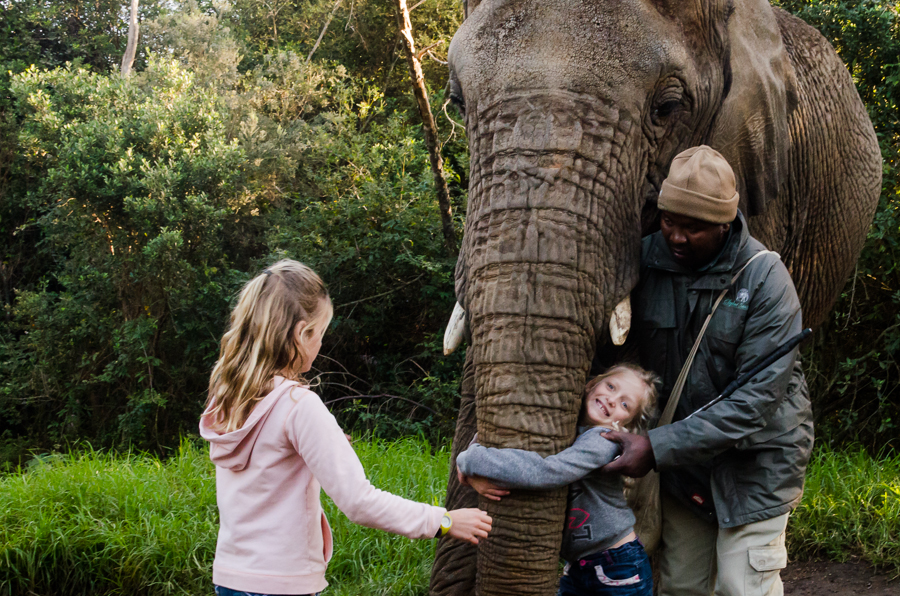
Of the five elephants, only three are happy to be around visitors. The other two had a bad experience with poachers and remain, understandably, quite nervous around humans.
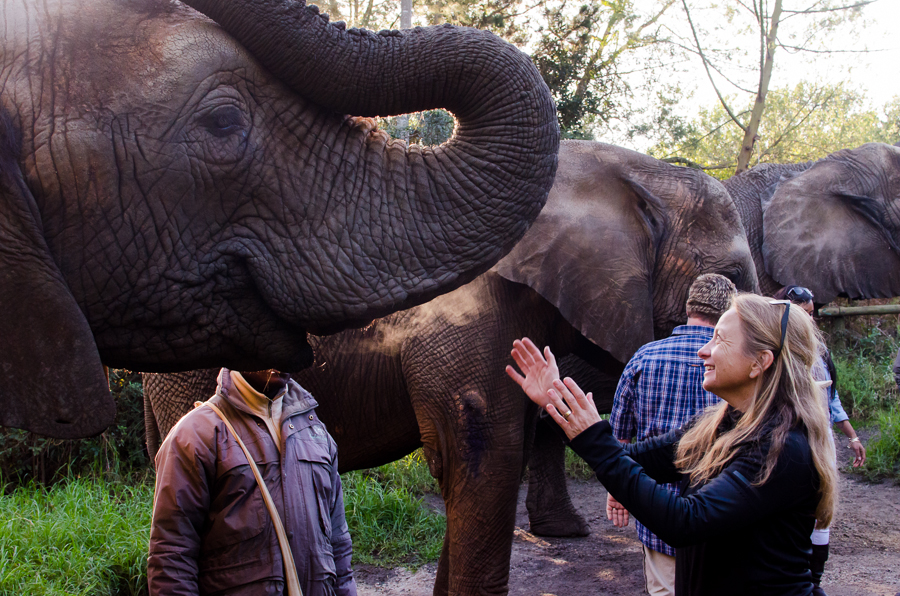
We were very lucky when we visited. It was low season, so there as only our family and one other. I highly recommend going in low season if you can. From what we could see, the crowds in high season must be incredible. We walked along a short path through some trees to a little clearing where the guides each stood with their elephant. Each guide has an elephant that he is solely in charge of. One guide told us how he had looked after his elephant since she was just a rescued young calf, even sleeping near her, on straw, in the shed.
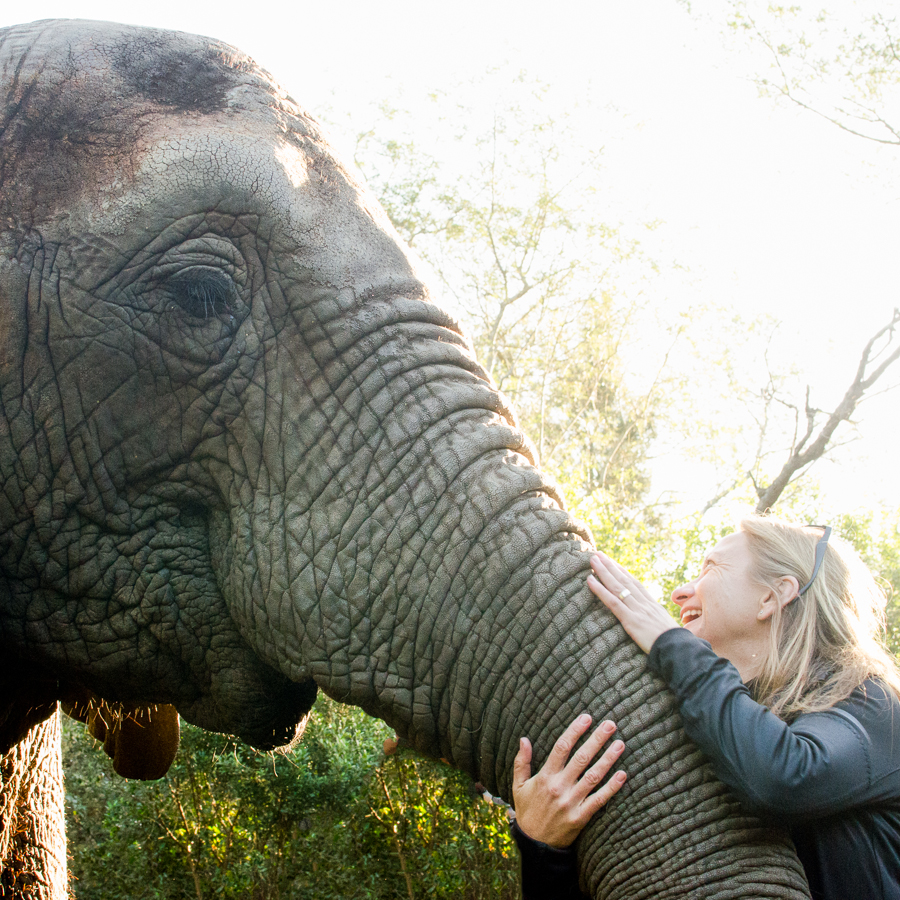
As the guide encouraged my girls to feel her trunk, inspect her giant toenails and wiry tail, the elephant leaned in toward them as though wanting more interaction. As we hugged their trunks, the elephants trumpeted and snorted for more food. We could feel their heat and energy. The deep trumpeting sound resonated through our bodies, giving us a feel for how scary it would sound in the wild. One of the elephants was born without any tusks. Sadly, due to the killing of elephants with large tusks, the tusk gene had been bred out of her parents.
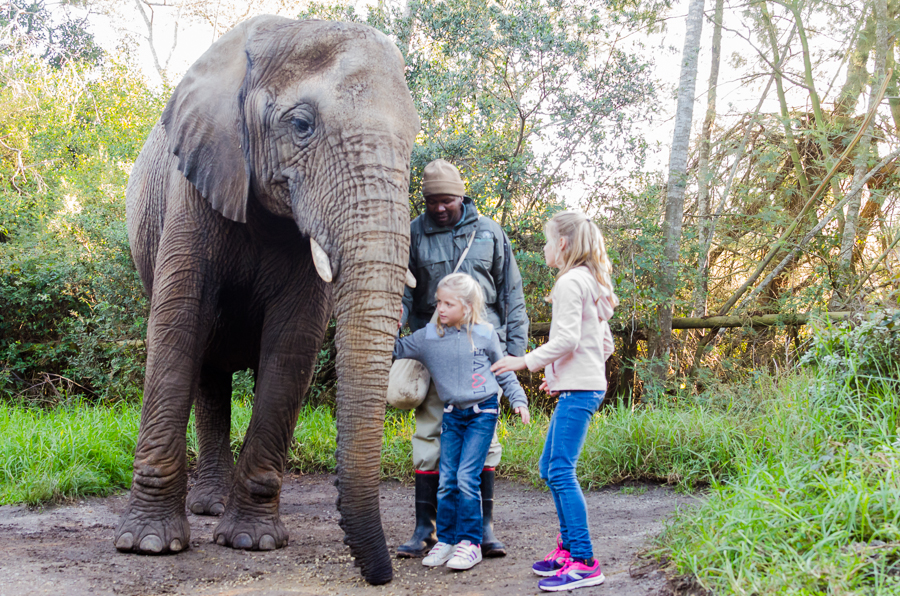
I found this whole experience hugely emotional. My hands were shaking and I had tears in my eyes. My heart went out to these young animals who had been sadly separated from their families. No matter how well they are treated, it is still not natural for them to be in captivity. Elephants need large herds, and shouldn't have to witness and mourn unnecessary violent deaths of their own.
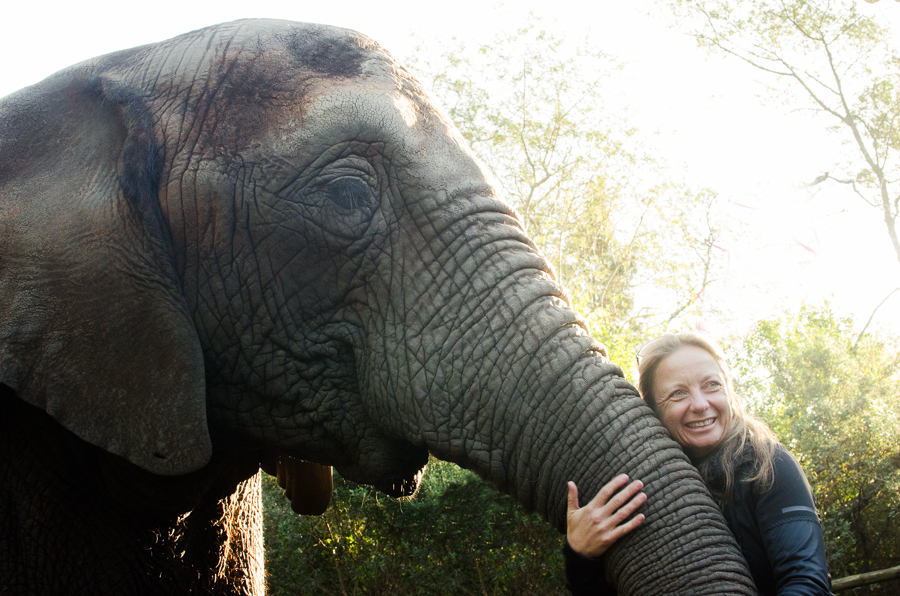
In the past, I have paid to see elephants in circuses, zoos and parks. I now wonder how I ever could have done that. Hopefully, by teaching my children, they will carry this love and knowledge on instead of repeating my mistakes. I would very much like to return to the Elephant Sanctuary someday. But next time, as ironic as it may sound for a passionate photographer, I would like to experience it without cameras. I'd like to forget about getting the perfect shot, and focus on completely immersing myself in the magic of walking with elephants.



